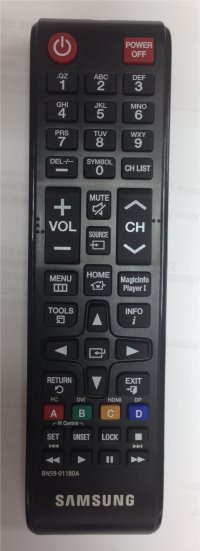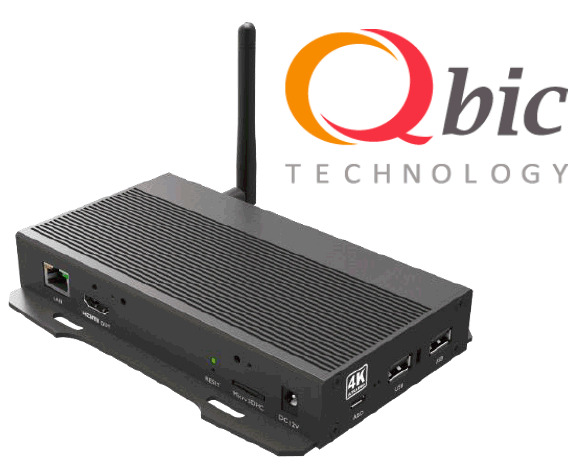We have developed a new feature for controlling a Samsung TV (no need for Tizen operating system).
The feature was developed for Samsung model DC40E, but can work with any DC series TV, which is sub-model E. In the future, we are planning to extend the feature to other TV series. For Tizen based smart Samsung TVs, we have a Tizen app which you can use.
The feature allows you to confirm that the TV is always on. You can enforce the TV to stay in a certain defined volume level and to confirm that HDMI1 port is always chosen. The new feature is available on the Chrome OS and Android app v4.4.58. Soon, we will add these new settings to the remote configuration feature which is in the online Studio.
So, how to do that? Just follow the instructions below. You can watch the following YouTube video to see how it’s being done.
 For the Samsung TV settings:
For the Samsung TV settings:
- Use the Samsung remote control to access the TV menu (by pressing the “MENU” button). You will use other buttons in the remote control, such as the right, left, up and down arrows, as well as the select/enter button (centralized between the arrow buttons) and the back button (called “RETURN”).
- When you see the Samsung menu on the TV display, choose the “Network” menu option.
- Click the “Network Status” option. Here you’ll see the IP address, subnet mask and gateway settings. You can stay with these values, but just need to make the IP to be static IP.
- In order to do that, click the “IP Settings” button below.
- In the new window, change the “IP Setting” from “Get Automatically” to “Enter Manually”.
- Press “OK”, then press “Close” and you’re back to the network menu. Click the back button in the remote control to get back to the main Samsung menu.
- In the main Samsung menu, choose the “System” menu.
- In the system menu, click the “Multi Control” sub-menu.
- You can leave the “ID Setup” as 00, but make sure you change the “PC Connection” from “RS232 cable” to be “RJ45 (LAN)/WiFi Network”.
- Click back in the remote control to get back to the general sub-menu.
- In the general sub-menu, click the “OSD Display” option.
- Turn off all the 3 options (“Source OSD”, “No Signal OSD” and “MDC OSD”), in order to reduce the on-screen notifications.
- Go back to the “System” menu. Click the “Power Control” sub-menu and then make sure the “Network Standby” option is set to on (otherwise, our app won’t be able to turn on your TV, in case it’s off).
For the NoviSign app’s settings:
- Enter the app’s settings (click the gear icon, in the top right corner of the app’s entrance screen).
- Scroll down to the “Advanced” block of settings, there you’ll find the setting called “External Interfaces”. Click to access it.
- In the menu, click “TV”.
- Turn on the “Control TV” setting. This will enforce the TV to be on.
- For the “TV Vendor”, no need to change it (it is set to “Samsung”).
- Change the “IP” setting to the IP address of the TV set (the one which you previously set in the TV menu).
- For the “Check Frequency” setting, this is the frequency (in seconds) of checking the TV for the settings (and altering them if required). We suggest not less than every 10 minutes (600 seconds), since every time it tries to change the volume setting, you’ll see a notification on the TV for a second.
- The “Volume Level” setting, this is the volume you want to set to (default is 20). When the app will probe the TV for the settings, then if the chosen volume is not what you set here, it will be changed to whatever you have set here.
- If you use HDMI1 as the input port of the TV (from your Android or ChromeOS TV box), then set the “Ensure HDMI1” to on. It means that every time (according the chosen frequency), when the app probes the TV for the settings, then if the chosen HDMI is not HDMI1, it will set it to be HDMI1.
- Exist the settings and run your playlist.
Nir.
 info@novisign.com
info@novisign.com +972 (9) 794-7643
+972 (9) 794-7643 (646) 893-7770
(646) 893-7770

